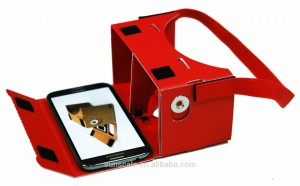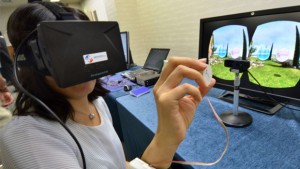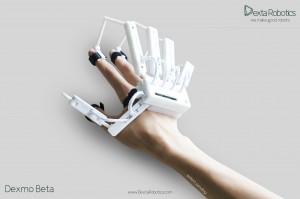A lot of fuss has been created around the arrival of Google Cardboards in 2014, which could potentially be used by Android and Apple users. This innovation is nothing more than the first step on a ladder that is as infinite as the future possibilities of virtual reality technologies. However, the importance of this marketing move should be highlighted since it helps the audience familiarize with the imminent virtual wave. The Cardboard should not be viewed as an enemy to head mounted devices like Oculus Rift DK2. The reason is a simple truth that bloggers and journalists express as James Martin did in his review on CNET: “It’s the ambassador that’ll make us care about virtual reality in the first place”.
Virtual Reality is a New World same as America was during the 15th century to the Europeans. Therefore, VR cannot just magically centralize itself in the technological proscenium. On the contrary, a gradual familiarization of the people with the available platforms should be achieved. Google grabbed the opportunity and created a platform, which can introduce the tech lovers to the new medium without pushing them out of their comfort zone. Thus, every smartphone owner can be transferred into the virtual world even though the immersion will not be of high quality or the experience profoundly engaging. The point is that it doesn’t have to. Their level of immersion should be an incentive for them to reach out to similar experiences or even the necessity to feel something superior.

Fancifying Google Cardboard
Since Google Cardboard is considerably cheaper (no more than 20 euros) than its platform siblings (an Oculus Rift DK2 will reach 350 euros), it offers a non-expensive way to experiment with VR even if the smartphone-based virtual capacities will not satisfy the hardcore users. The other option would be to make it on your own, a choice that Google offer since their a guide for the ones that want to get their hand dirty in virtual reality. The VR source for any smartphone is the app center, which keeps on expanding day by day. Some applications offer a quite satisfactory experience while others fall prey to high latency or lack of an immersive framework. The app center provides the users with possibilities of watching VR videos of driving and having fun (Volvo Reality and Roller Coaster VR) experiencing films as if you are in a movie theatre as well as transferring to dark war times poetically enveloped (War of Words VR). Other apps promise more than they can deliver like Glitcher VR, which is promoted as a combination of VR and AR since it adds layers on the already existing reality, but it drowns in kinetosis (motion nausea) caused by high latency and low resolution.
Another positive aspect of Google Cardboard is its portability and its wireless status that can turn it the new social obsession at least for watching videos. The platform is not intended for games in the present state but it is only logical since it is the first specimen of its kind. The cardboard’s wireless status is beneficiary to the users since there is no need for a space-oriented experience. This freedom aims to emancipate virtual reality from its computer/platform dependence and take it out on the streets. After all, mainstreaming is not a road paved with high technology and excellence but one built on users’ feedback and constant development through renovation of ideas and technological platforms.
On the whole, Google Cardboard is not the most hi-tech platform ever created but it is the blueprint for all the ones to come. Experimentation is the key element in the contemporary blooming virtual world.
Our interactive cinema project flourishes in the middle of a series of virtual reality industry advances, which creates endless possibilities. These possibilities should be explored by the VR experts in order for the audience to be adequately immersed but also to open new doors for better constructed narrative worlds to be built upon them. The gimmick impression that Virtual Reality has created in the audience’s eyes is justified up to a certain degree. The visual experience was technically inefficient, thing that could (and still can) cause fatigue and nausea, but also pretty basic in terms of the incorporated story and its interactivity evoking the audience’s boredom and disinterest.

Woman using haptic stimuli in VR
The conducted research during the past week, showed that the demand for a more complex but simultaneously more interactive virtual world for the viewers is the key element that will alter the status of virtual reality. The interactive nature of VR should be enhanced and thus not only supported by auditory and visual devices but also haptic ones. Immersion can be achieved through providing the gamer/viewer with a realistic environment in which he/she can orientate himself/herself and rely on sight, hearing but touch as well. The element of tactile feedback should be centralized since the other senses have been “persuaded” adequately with the latest progress in head mounted devices. Therefore, touch and temperature should be considered as points of departure for formation of new experiences. The equivalence of viewing yourself in the virtual world is the first step towards reaching a far more immersive reality where the user can interact with the environment. The user needs to feel immersed and forget the distinction between the and the virtual. As it happened to the experiment “Enhancing Virtual Immersion through Tactile Feedback” conducted in Honolulu in 2014, the tactile feedback was based on the user’s ability to feel the object in terms of temperature. The color implementation helped specify the user’s correspondence of temperature and color. Blue signified cold and red signified warm, as expected. However, even this basic relation between temperature and color in VR gives out a sense of reality since the feeling in both contexts comes closer to the real one.

Dexmo Beta: an exoskeleton tactile device
This observation was picked up by VR companies which prototyped devices that simulate the sense of touch in VR. H wever, these devices are there to offer the audience with a fully functioning avatar but the user is half-immersed since he/she won’t be touching any of the virtual objects that he/she will be encountering. Therefore, the Holy Trinity of the tactile aspect of VR can be texture , temperature and weight. If at least two out of three can be incorporated in VR then the user’s brain will convince of the “authenticity” of the experience. The transition from the passive touch (when the environment interacts with the user but not vice versa) to the illusionary sense of freedom of touching can be technically difficult to perfectionate but small steps should be achieved towards that direction.
Last but not least, the haptic technology which is on the rise right now with a variety of sensory devices such as vests, gloves(i.e see Dexmo) and foot and wearable controllers will be on the market soon. Therefore, the tactile element should be the catalyst in a complex and interesting narrative virtual world not the other way around.
Works Cited:
Ziat, Mounia, Taylor Rolison Rolison, Andrew Shirtz, Daniel Wilbern, and Carrie Anne Balcer. “Enhancing Virtual Immersion through Tactile Feedback.” Http://dl.acm.org/. N.p., Oct. 2014. Web. Sept. 2015.









